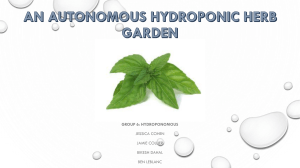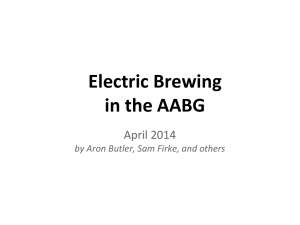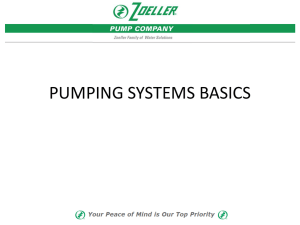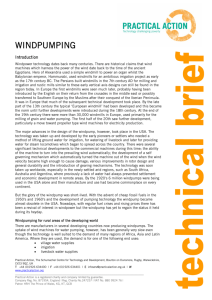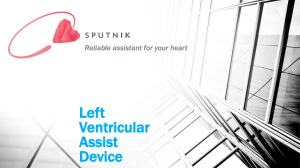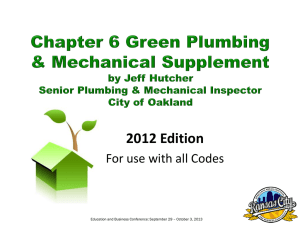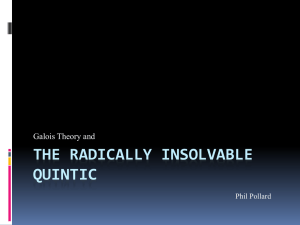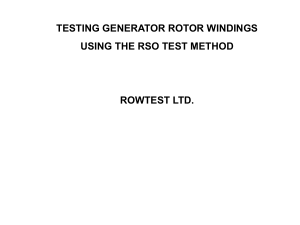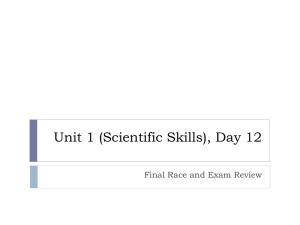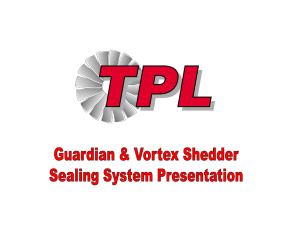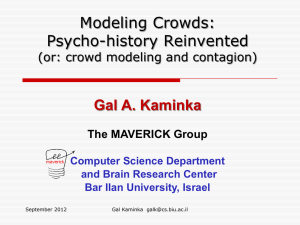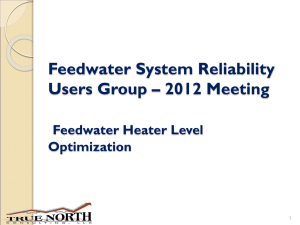Dawson Company
advertisement
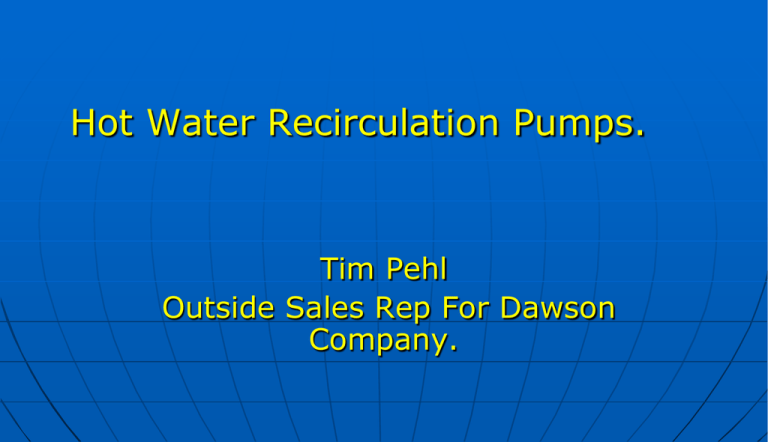
Hot Water Recirculation Pumps. Tim Pehl Outside Sales Rep For Dawson Company. Topics Scenario. How a recirculation Pump works. History of recirculation Pumps. Latest technology. 2 Scenario. We get up in the morning and we turn on the hot water to take a shower. we put our hand into the stream of water to check the temperature, and it is cold. We may wait for a full 60 seconds, or longer, before we can step in and take our shower. Why?? We don’t have a recirculation pump! 3 Scenario. Dead end piping Traditional non-recirculated system Traditional non-recirculated system Normal Hot Water Operation: Normal Hot Water Operation: Last hot water use at night time around 11:00pm Following morning at 7:00am Water heater output: Water heater output: 130°F Hot Water None – Existing water cools to 60°F DHW Pipe run: WH 100 feet ¾” Copper Pipe WH DHW Pipe run: 100 feet ¾” Copper Pipe Scenario. Residence is three bedroom with four occupants and two baths. Water heater is approximately 60’ from master bedroom Hot water supply line from water heater is un-insulated ¾” copper pipe Assume the following volume of hot water wasted per day: • • Master lavatory 1.5 gal fixture 2.625 gal wasted/day Second bathroom lavatory 1.5 gal fixture 7.5 gal wasted/day Master Shower 2.5 gal fixture 15 gal wasted/day Second bathroom shower 2.5 gal fixture 2.625 gal wasted/day Kitchen Sink 2.5 gal fixture 12.5 gal wasted/day Water consumption is based on the system operating 350 days per year Total water wasted in a year is 14,087 gallons based on total water wasted of 40.25 gallons per day Scenario. How Much Water is 14,000 Gallons? Scenario. Return line added with Circulator. System with hot water recirculation Normal Hot Water Operation: Following morning at 7:00am 60psi WH How a pump works SYSTEM CURVE Recirculation pump with ECM technology Standard Induction Motors ECM ( Electrically Commutated Motor) Technology Induction Vs Permanent Magnet Induction Motor No magnet on rotor • Stator coils create magnetic field which induces current into rotor • The rotor currents interact with the rotating magnetic field which causes a rotational motion on the rotor. • Because the magnetic and electric fields are out of phase (slip), there are greater current requirements and current losses. Permanent Magnet Motor Permanent magnet on rotor Eliminates the requirement for input power to magnetize rotor Stator coils generate a rotating field to induce the permanent magnet to rotate Motor is microprocessor controlled to keep the stator current in phase with the magnets of the rotor. The lower current requirement and no “slip” result in greater efficiency. Comparison: Spherical Motor vs. Canned Motor Key Advantages • Simplicity – just one high precision part • No shaft, no bearing bushings • Self-aligning rotor • Long term quiet and trouble free operation • No start-up problems SYSTEM CURVE System Curve S y s t e m C u r v e System Curve Recirculation pump with ECM technology Variable speed option can reduce smallest pump energy consumption even further.. 10 System Curve 10 Head (FT) e3-4 8 5 4 2 2 Flow (GPM) Duty Point 5 Watts System Curve 6 1 2 3 4 5 6 Flow (GPM) Duty Point 40 Watts 88% LESS ENERGY CONSUMPTION One Switch - Two Options Every ECM circulator has a switch installed- you have the choice A.Variable Speed Control B.Variable Temperature Control(68 to 158 Deg.F.) Variable Speed Control NEED PIC Variable Temperature Control Options Most pumps come standard with constant speed. Power cords are sometimes optional. Variable speed. Temperature control. Time clocks What if I don’t have a return line? Autocirc 14 watts But I have a Tankless water heater Sizing a pump for Tankless water heaters is the same as a tank type. However, a larger pump will be needed as the Tankless units have a heat exchanger inside that produces a higher pressure drop. Questions?
